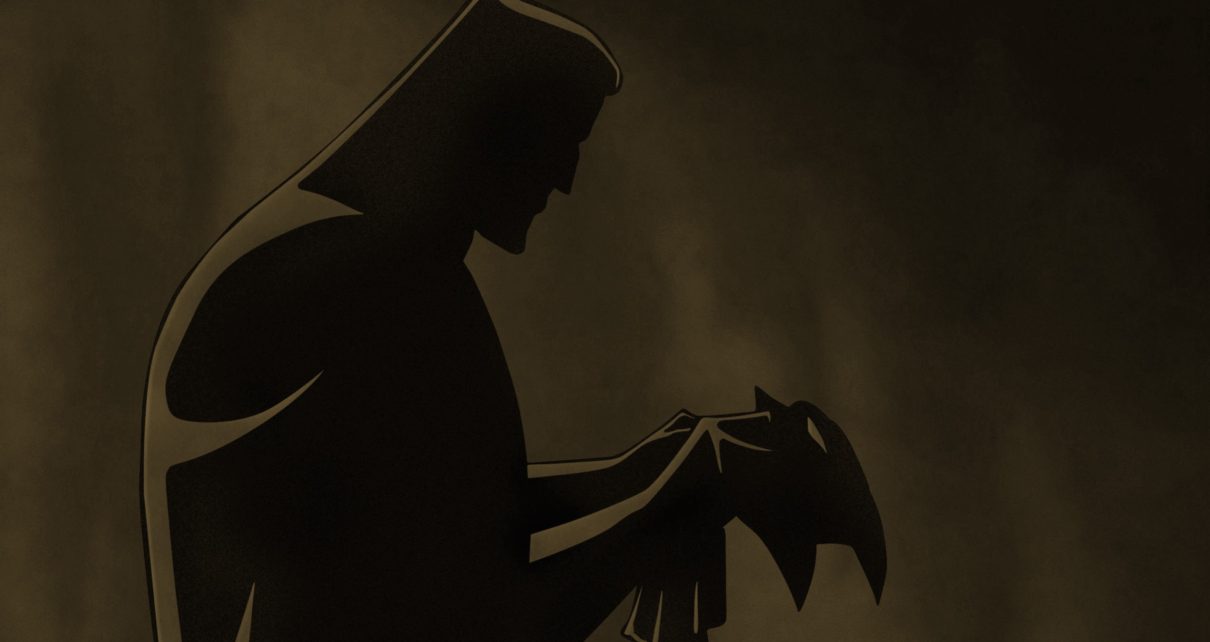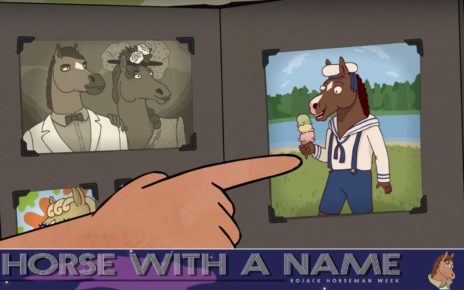No theatrical Batman release has ever opted to stage its grand finale with a sword fight set against a desert backdrop atop a vat of boiling green ooze, but on Batman: The Animated Series, the story demanded it.
“The Demon’s Quest,” one of the show’s great two-part episodes, travels the globe from the stormy streets of Gotham to snowy mountaintops, from jaguar-infested rainforests to the sands of the Sahara. It also introduced Batman’s most draconian supervillain, Ra’s al Ghul, to any screen for the first time. And Denny O’Neill—creator of Ra’s and, with artist Neal Adams and editor Julius Schwartz, one of the men who turned the campy Caped Crusader of the ’60s back into the dark avenger we know today—wrote the episode himself, well after the show had already adapted 15 stories from his legendary Batman run.
“I was sitting in my DC Comics office one day,” O’Neill recalls now. “A couple of guys I didn’t know came in and asked if they could show me something.”
Those two guys were Bruce Timm and Paul Dini, architects of the now widely respected ’90s series. And the story of how they convinced O’Neill that they were serious about what was then their in-development Batman show — and how they got him to adapt one of his best stories for television— likely wouldn’t be told today if not for the sole creator, interviewer, and producer of Batman: The Animated Podcast, who also happens to be one of the nerdiest comedians working in Los Angeles: Justin Michael.
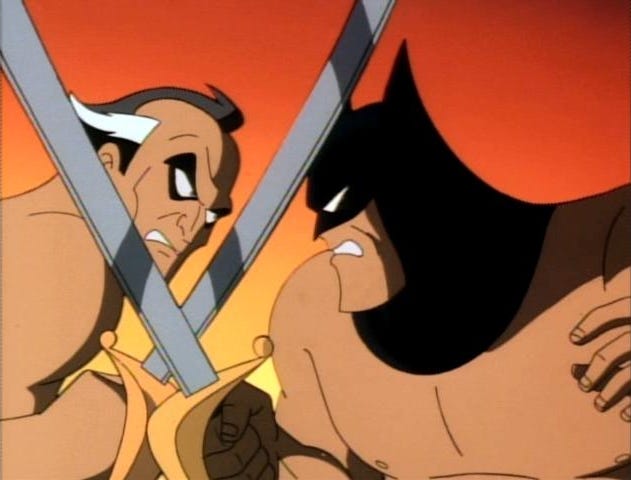
“Jesus Christ, I really have too much Batman stuff,” Michael admits to The Dot and Line as we catch up with him on the podcast, his approach to tracking down guests (fans and creators alike) who connect with the character, and the dutiful, almost religious, love of Batman: The Animated Series he’s cultivated for twenty years now. Its most recent episode focused on “The Demon’s Quest.”
“I started it on a whim because I loved the show,” he says. “I didn’t expect there to be such a huge response, which has been really nice.”

After interviewing dozens of guests, conducting hours of analysis on classic episodes, editing even more hours of footage on Final Cut 7, and developing a creative suite of goofy sketches and characters to flesh out the podcast (a theme song based on the B:TAS theme; a side character with a silly voice named Kevin Conroybot, after the iconic voice actor who played Batman; a Mayor of Podcasts), Michael’s amassed an impressive following of listeners who come for the nostalgia and stay for the deep dive.
Every two weeks, Michael releases a new episode breaking down what made a particular episode of the series great — typically through an interview with a fan just as nerdy as Michael is, and an interview with a writer, producer, voice actor, or others who have worked on the show. So far it’s worked out. The podcast reaches 10,000–15,000 listeners a month with no signs of slowing. It’s been featured on iTunes, earned geeky web plaudits from outlets like Nerdist and The Daily Dot, and famous guests like Dini and Seth Green have championed it on Twitter.
Harley Quinn visits BATS Podcast! Check it out…https://twitter.com/BTASpodcast/status/694581126334062592 …
My love @ClareGrant & I talk animated Batman with @BTASpodcast and you can listen: http://goo.gl/5Q8HBF #AllThingsBatman
That’s not bad for someone who records episodes from his closet, surrounded by Batmemorabilia he’s owned since childhood and more recent acquisitions alike. Michael’s also a working comedian, writer, and commercial director based in L.A., and (for now) nerdy podcasts don’t pay the bills.
“Honestly, I think it’s just the show itself,” Michael says of how he attracts his audience. “People don’t know that this podcast exists, but once they do, if they loved the show, they seem to enjoy it.”
Michael’s busy schedule may slow him down, but it doesn’t stop him. The construction of each episode starts with sending emails out to contacts or guests he’d like to secure for the show. The first episode memorably featured Green (a friend of Michael’s through Robot Chicken; Michael had guest-starred in a bit role in one episode), Green’s wife Clare Grant (a longtime fan of B:TAS as well as a professional actor and voice actor), and Michael’s mother, with whom he had an endearingly jokey chat about Nightwing. (“I did promise her that she would come back sometime over the next year,” Michael says.)
“There’s so much unseen Batman art that I’ve gotten to see and I wish people could see.” — Justin Michael, creator of ‘Batman: The Animated Podcast’
Some guests are easier to attract than others. Paul Dini direct-messaged Michael on Twitter after listening to the podcast, and has now appeared on two episodes. Michael and Kevin Conroy share the same voice-acting agent, a connection he used to full effect when he did an episode on The Mask of the Phantasm, the classic B:TAS theatrical film. Another personal connection secured Andrea Romano, one of animation’s most respected and prolific voice directors. Conversely, Bruce Timm, the connective tissue of the DC Animated Universe that B:TAS launched, “seems like an elusive guest,” Michael says. “He’s the guy I’m feeling will be least likely to do the show, but maybe!”
After conducting the interviews, he hammers out a script based on the content he has and edits it all together, a process that comes together “a day or two” before an episode drops on iTunes. Earlier in the podcast’s run, he would dream up creative ideas for fake commercials or characters to thematically weave into the episode in question. (Apparently, “certain people love it and certain people very actively hate it.”) Perhaps he’ll massage the audio or punch up the jokes or reactions from a given interview in post-production, or inject clips from corresponding episodes of B:TAS into the audio to match them up with the interview.
“If I had all the time in the world, I would 100-percent do that for every episode,” he says. “I do all of it myself, which takes a toll.”
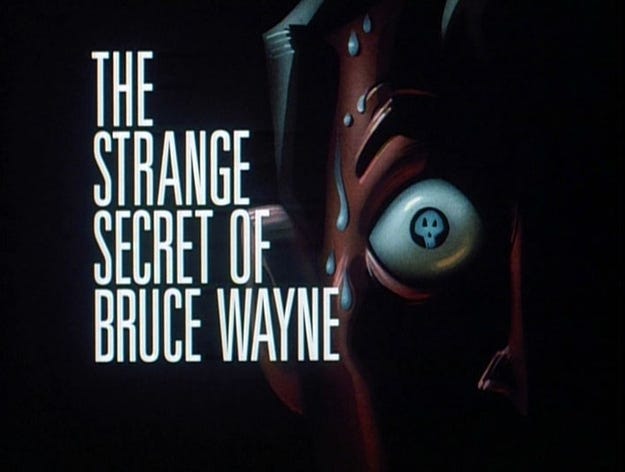
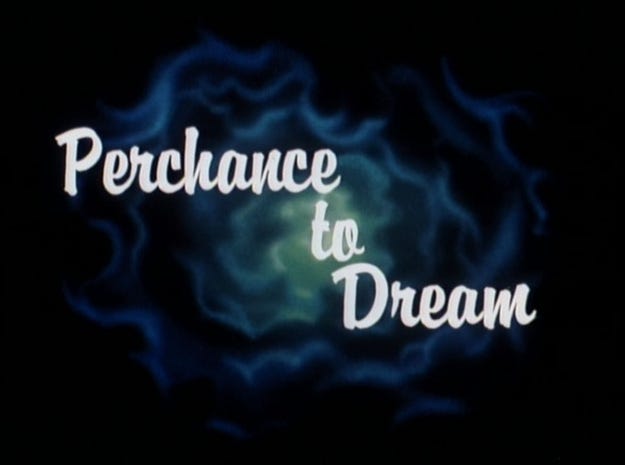
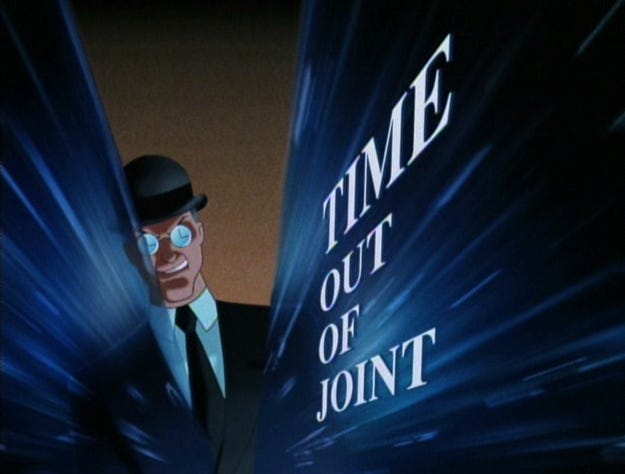
Michael’s friends have described him as a walking commercial for his fandom, and there’s no reason to think otherwise. (He directs toy commercials for DC Comics on the side, so it’s hardly a stretch.) His favorite episode of the show, tellingly, isn’t a major two-parter like “The Demon’s Quest,” or the character-redefining “Heart of Ice,” or the narratively experimental “Over the Edge,” but instead “The Laughing Fish.” On its nose, it’s a comparatively simple (and more than a little bonkers) Joker caper where Batman’s arch-villain poisons fish in the river—until it’s not.
“It’s the perfect animated series episode to introduce people to the show,” Michael insists. He cites its excellent voice acting, its balance between creepiness and humor, the Batman-Joker dynamic, and its beautiful animation and music — all of which holds up on repeated rewatch after 20 years of film dust have set in, and grimmer and grittier Batman takes have crept into the public consciousness.
Michael holds such an affection for “The Laughing Fish” that he owns storyboards from the episode that were originally drafted by Timm—who directed the episode (which was written by Dini)—and keeps them in his workspace. His friend Harry Chaskin, who’s also appeared on the podcast, even sculpted and painted a model of the episode’s iconic fish to give Michael for his birthday.
“But there are so many others,” Michael muses idly, rattling off four more great entries before finally stopping himself. “I think ‘Laughing Fish.’ I’m gonna put my foot down.”
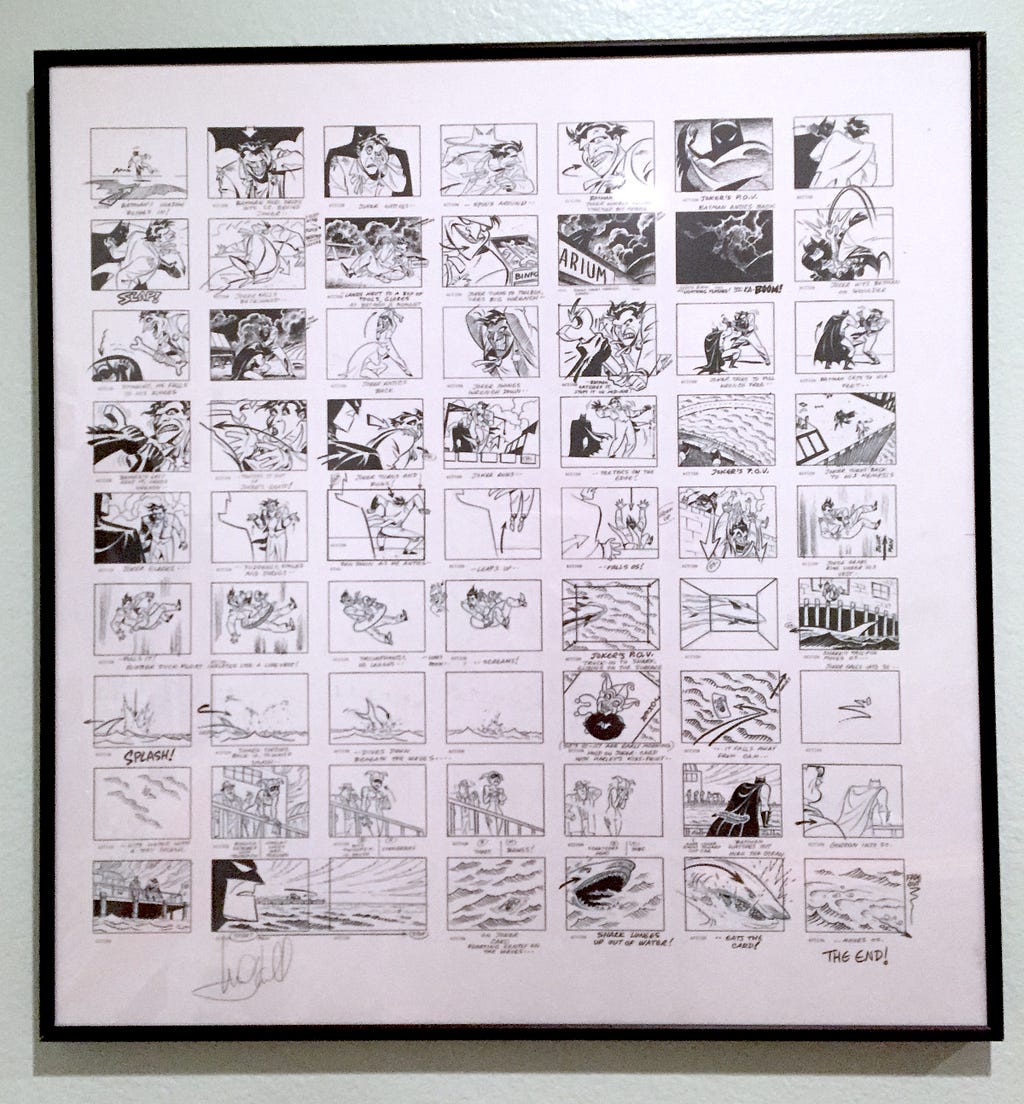 Storyboard from “The Laughing Fish” courtesy Justin Michael
Storyboard from “The Laughing Fish” courtesy Justin MichaelOf course, that idle chatter, granular approach, and common connection over the fandom are what his podcast runs on. In the case of Dan Riba, a storyboard artist and director who worked on DCAU shows including B:TAS and Justice League, Michael says “he was just excited to share stories and look at all my weird Batman merchandise and talk shop and be fanboys of the series he worked on.” It turned into one of Michael’s favorite interviews.
For all that gushing, no animation historian analyzes and conveys the nuance, wonder, and history of B:TAS with such fervor in 2016. The storyboards, action figures, and other artifacts guide his way, serving as primary source material. The conversations he conducts offer context for a cultural product as complex as an art-deco skyscraper, as ridiculous as a police blimp, and as rewarding as biblical texts. And he does all of it in his free time—largely out of his closet—when he’s not creating stuff that will make him money. After 30 entries, it’s still consistently fun and surprising.
This is The Dot and Line! If you like this story, recommend it below and follow us on Twitter and Facebook.
So far on Batman: The Animated Podcast, he’s covered the show’s films, two-parters, and standalone episodes alike. He could do dozens more before running out of B:TAS episodes—but then there’s Superman: The Animated Series, there’s Batman Beyond, there’s Justice League and Justice League Unlimited and a handful of other movies. There are new films, too—like the upcoming adaptation of The Killing Joke, which features some of the same talent that made B:TAS so memorable.
“I would love to pitch a book to DC,” Michael mentions toward the end of our conversation. “There’s so much unseen Batman art that I’ve gotten to see and I wish people could see. I’d love to get those lost episode scripts or even any of the scripts out there.”
Twenty years later, those scripts have aged beautifully. At their most memorable, they leaned into their mature examinations of character psychology. For his fourteenth podcast entry, Michael focused on the classic B:TAS episode “Perchance to Dream,” set in an alternate reality in which Bruce Wayne’s parents never died and he’s engaged to Selina Kyle (Catwoman). For a brief moment, Batman has found the peace he deserves, complete with the smiling faces of his parents and a father also voiced by Kevin Conroy.
Obviously, the episode is a dream. More obviously, it is part of a villainous plot by the Mad Hatter. Neither of those tropes prevent it from expressing human tragedy in what should have been just a superhero cartoon.
And obviously Michael breaks it all down. He interviews Alan Burnett, a producer on the show, but he also talks to Jake Goldman. Goldman works in animation as a writer on Powerpuff Girls, Futurama, and shows for Nick Jr., and has also been interviewed on the Everything’s Coming Up Podcast!, which breaks down episodes of The Simpsons in the same way Michael breaks down B:TAS. For Goldman, both The Simpsons and B:TAS fall into a particular category.
“Family Guy, Freakazoid: Really fantastic, fantastic stuff, great, great jokes. But it’s the jokes that stick with you,” he says.“With Batman: The Animated Series, or with The Simpsons, it’s the stories that do…. You can tell: He just got mind-fucked.”
For Michael and many fellow fans, that’s the power one animated series about a lunatic in a costume commanded. Two decades haven’t changed that.
“It would be real cool even if they made a limited series of new episodes,” Michael told me before we hung up the phone. “I would love to see that.”
Perchance to dream, Mr. Michael.
Listen to the latest installment of Batman: The Animated Podcast right here!
Thanks for reading The Dot and Line, where we take animation of all kinds seriously (but not too seriously). If you liked what you read, recommend this article and follow us on Twitter and Facebook.


